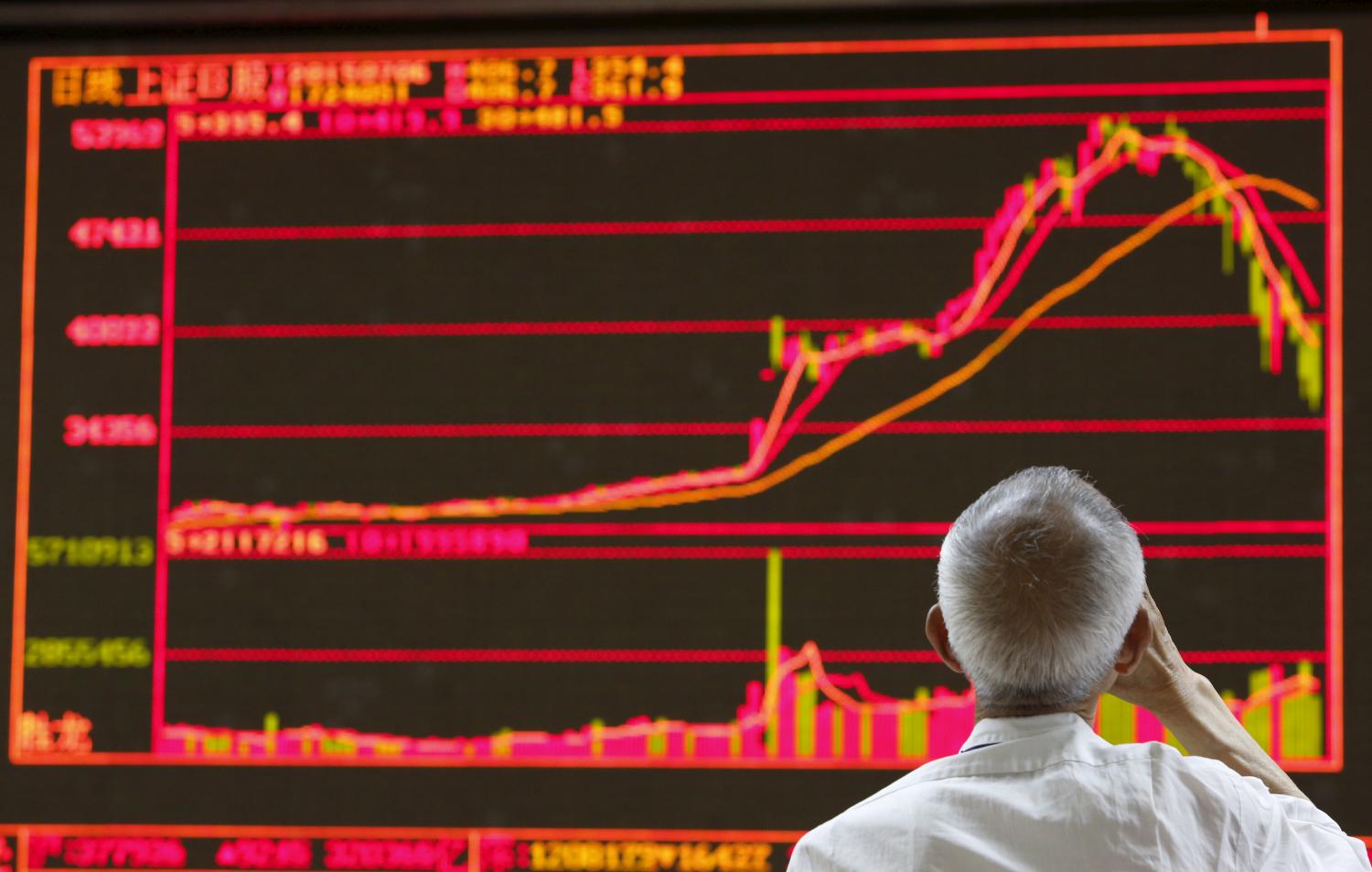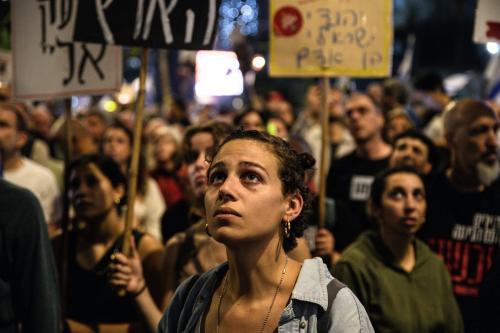A debate took place in the early 2000s, which is perhaps unthinkable in 2018. The debate was about whether the International Monetary Fund (IMF) and the global financial safety net were still relevant, with some calling for them to be scrapped.
The managing director of the IMF published an article in 2005 titled: “Is the IMF’s mandate still relevant?” In it, he defended the relevance of the IMF arguing that, despite the lack of crises for it to respond to, the IMF could still play a useful role in providing analysis and surveillance (Rato, 2005).
In early 2007, the economics journal, The International Economy, ran a symposium titled “Is the IMF obsolete?” (The International Economy, 2007). It asked participants what should be done with the IMF and the global financial safety net given narrowing risk spreads, more efficient risk management and increased self-insurance by many countries. Ideas ranged from having the IMF focus purely on technical assistance and surveillance, having it merged with the World Bank or simply abolishing it altogether.
The notion that the safety net had fallen into disuse was a commonly held view before 2008. Andrew Rose argued in 2006 that there was no role for the safety net in the new global system that developed post-Bretton Woods. Inflation-targeting, independent and transparent central banks with predominantly floating exchange rates produced a durable global system, which, he argued, no longer relied on safety nets or international coordination for its stability (Rose, 2006).
This view, of course, proved to be incorrect. With the onset of the global financial crisis from late 2007, the IMF and the global financial safety net roared back into fashion. The consequences of neglecting the safety net for many years was on display for all to see, threatening the stability of the global economy and the global financial system.
Whole economies, one after the other, went into crisis. Each of these economies required an amount of external assistance that was multiples of the meagre funds that the IMF had to offer. Global liquidity evaporated. Major economies faced shortages of U.S. dollars with no means through which to access more. Financing for critical projects in developing countries dried-up. Credit froze, global trade seized and it was left to the newly-minted G-20 leaders’ forum to fix it.
The G-20 played a critical role in strengthening the global financial safety net. It was at the G-20’s first meeting as a leaders forum that Prime Minister Aso and other leaders proposed an immediate increase in funding for the IMF—Haruhiko Kuroda, Governor of the Bank of Japan, interviewed June 21, 2017.
The G-20 took bold steps in reviving the global financial safety net. It tripled the IMF’s lending capacity to $750 billion. It increased the development financing available to the World Bank and other development banks by $235 billion. It boosted support for trade finance by $250 billion (G-20, 2009). With an intensifying crisis in Europe, it agreed to a further $460 billion of bilateral loans to the IMF in 2010 (G-20, 2010). As part of a comprehensive work program over many years, the G-20 supported reforms to the IMF’s governance, new precautionary lending facilities, an expanded Special Drawing Rights (SDR) basket of currencies and developed principles to boost cooperation between the IMF and regional mechanisms (G-20, 2011).
The G-20 was a fresh pair of eyes looking into the issue of the IMF’s voice, representation and governance. It was very important in getting the 2010 IMF governance reforms through and it should continue to play a very important role for the current review of quotas—Alexandre Tombini, former governor of the Central Bank of Brazil, interviewed September 19, 2017.
The strengthening of the global financial safety net was not just at the global level. Europe created the European Stability Mechanism (ESM) with lending capacity of $600 billion. Although they have never been used, Asia created what became the Chiang Mai Initiative Multilateralization with current lending capacity of $240 billion and the BRICS countries[1] created their own $100 billion currency reserve pool.[2]
G-20 countries were even more ambitious bilaterally. The U.S. Federal Reserve created a global network of bilateral currency swap lines to address the critical shortfall in access to U.S.-dollar funding. These swap lines went from $24 billion in 2007, to $385 billion in 2008 to being unlimited in size with some economies by 2009.[3] Others acted, too. The European Central Bank established swap lines with nine European economies[4] and, more recently, the People’s Bank of China has extended $470 billion of swap lines to over 30 countries.[5] All of this built on the $7.9 trillion of self-insurance through foreign exchange and gold reserves held by G-20 economies.[6]
G-20 countries have achieved a great deal in strengthening the global financial safety net. The question for this paper is whether the G-20’s job is complete, or whether there is more work to be done. Circumstances, after all, have changed since the crisis. Fiscal and monetary policy space is much more limited across most of the G-20.[7] And while the resilience of macro-financial systems has improved, particularly in the emerging economies,[8] the misplaced optimism in the lead-up to the 2008 crisis shows the dangers of complacency.
This paper calculates the size of the safety net by adding together its global, regional, and bilateral components. It considers the implications of domestic reserves, too, but treats these as domestic buffers—much like a country’s fiscal and monetary policy space—rather than part of the global financial safety net (see Sterland, 2017).[9] The paper calculates the size of the safety net in both aggregate and from the perspective of each G-20 country. It then war-games crisis scenarios based on nine past crises. These include three regional crises: the Asian financial crisis, the European debt crisis and the Latin American debt crisis, and six country-specific crises in Argentina (2002), Turkey (2001), Ecuador (1999), Russia (1998), Mexico (1994), and Chile (1982).
The paper finds that the safety net is often unable to provide even the same level of support as it has in the past, particularly for widespread shocks. But even for small crises, multiple components of the safety net need to be engaged and coordinated to deliver financial support. This coordination is complicated by the differing objectives, mandates, and interdependencies between each component of the safety net. Many of the safety net’s institutions and arrangements are intimately linked. Some parts of the safety net can only be accessed up to a limit. Some are conditional on other parts of the safety net also being engaged and some aspects of the safety net are only available to provide liquidity and are not available during balance of payments challenges (although, as discussed below, this distinction is not always clear). This highlights the critical importance of such war gaming exercises.
Finally, the paper reports the results from in-depth interviews with 61 leaders, central bank governors, ministers, and officials from across all G-20 countries. These are the individuals who make up the G-20 and are responsible for shaping the policies in their countries. The findings of this paper are testament to the generosity and openness of these policymakers in discussing their experiences in global economic cooperation. Participants included Kevin Rudd, Janet Yellen, Haruhiko Kuroda, Ben Bernanke, Jack Lew, Mark Carney, and 55 other politicians and officials to whom I am deeply grateful. A breakdown of the sample and details of the research methodology are available in Attachment B.
The paper shows that the safety net exists within a complex web of economic and political considerations which differ between countries and between components of the safety net. These political considerations cannot be overlooked. They shape the safety net’s response in a crisis and what the G-20 can and cannot deliver in strengthening it. Based on the war gaming and political analysis, the paper outlines a near- and long-term agenda for the G-20 on safety net reform.
The U.S. certainly paid a cost for the delay on IMF reform. It helped fuel the demand for competing forums and also weakened the U.S. in negotiations with the emerging market economies on other issues. There were sessions in multilateral and bilateral meetings that would be entirely devoted to berating the U.S. for its delay in approving quota reform—Jacob Lew, former Treasury Secretary, United States, interviewed September 7, 2017.
[1] Brazil, Russia, India, China and South Africa
[2] See Appendix A for sources on these figures.
[3] Federal Reserve (2008-2013).
[4] See Appendix A for sources on these figures.
[5] Council for Foreign Relations (2015).
[6] See CIA (2016).
[7] See Triggs (2018) on the decrease in monetary policy space and increase in public debt among G-20 countries.
[8] Banks are well-capitalised and supervisory frameworks are strong, exchange rates are more market determined and able to absorb shocks, inflation is much lower, large current account imbalances have narrowed and Asian economies are much more able pursue countercyclical policies that buttress stability and can increasingly issue bonds denominated in their own currencies (see Triggs, 2018; Sterland, 2017; The Economist, 2017).
[9] In some instances these foreign exchange reserves are also part of regional agreements, such as the CMIM, in which case including them in the safety net also constitutes double-counting.






